In the landscape of automotive insurance, Medical Payments (MedPay) coverage stands out as a pivotal but often misunderstood element. This coverage is designed to pay for medical expenses incurred by you and your passengers as a result of a car accident, regardless of who is at fault.
The precise mechanics of how MedPay functions, alongside its benefits and limitations, are vital for policyholders to understand. Comparatively evaluating MedPay against Personal Injury Protection (PIP) insurance reveals nuanced differences that could greatly impact your financial protection in the aftermath of an accident.
As we explore the intricacies of MedPay, including coverage limits, costs, and common misconceptions, the importance of choosing the right coverage tailored to individual needs becomes increasingly apparent.
Understanding MedPay Coverage
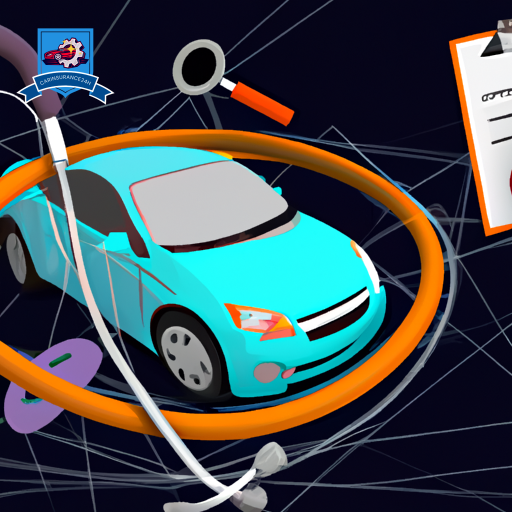
Medical Payments Coverage, commonly referred to as MedPay, is a facet of auto insurance designed to cover medical expenses and funeral costs incurred by the insured and passengers in the event of an accident, regardless of who is at fault. This specific inclusion in an auto insurance policy plays a pivotal role in guaranteeing financial security following unforeseen accidents, serving as a cushion against the immediate costs that arise from medical treatment and, in tragic circumstances, burial services.
When considering MedPay, policy comparison becomes an essential step for potential policyholders. Different insurance providers offer varying levels of coverage, deductibles, and exclusions under their MedPay clauses. It is essential for individuals to meticulously compare these aspects alongside their personal needs and the driving risks they face. This comparative analysis aids in selecting a policy that not only fits their budget but also provides adequate coverage in the face of accidents.
Premium calculation for MedPay is influenced by several factors, including the policyholder’s driving history, vehicle type, and the coverage limits they select. Insurers assess these elements to determine the risk profile of an insured, which in turn influences the premium rates. Higher coverage limits typically result in higher premiums; however, the choice of a higher deductible can mitigate these costs. It’s important for policyholders to strike a balance between manageable premium payments and sufficient coverage to protect against the financial impact of medical expenses post-accident.
Understanding MedPay requires an appreciation of its role within a broader auto insurance policy, the nuances of policy comparison, and the intricacies of premium calculation. This comprehension guarantees informed decision-making, enabling policyholders to secure coverage that aligns with their financial and safety needs.
How MedPay Works
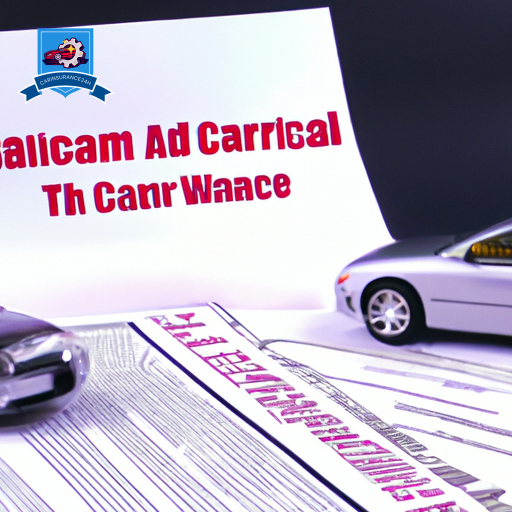
Medical Payments Car Insurance, often referred to as MedPay, operates to provide prompt financial assistance for medical expenses following a vehicular accident, regardless of fault.
This segment will examine the extent of coverage offered, the procedure for filing a claim, and the inherent benefits and limitations associated with MedPay.
Understanding these components is vital for policyholders to effectively navigate their MedPay coverage and optimize its utility in times of need.
Coverage Scope
MedPay’s coverage scope is designed to provide financial protection for individuals involved in auto accidents, covering medical expenses regardless of who is at fault. This all-encompassing approach guarantees that policyholders receive timely support without the complexities of establishing fault, which can be particularly beneficial in states with no-fault laws.
However, it is critical to understand the nuances of deductible policies and exclusion specifics associated with MedPay. Deductible policies might require the insured to pay a certain amount before MedPay contributions kick in, influencing the overall benefit. Meanwhile, exclusion specifics detail the circumstances or types of injuries not covered under the policy.
These elements are vital in evaluating the extent of coverage and foreseeing potential out-of-pocket expenses in the event of an accident.
Claim Process
Initiating a claim with Medical Payments (MedPay) insurance involves a straightforward procedure that guarantees timely financial assistance for medical expenses following an automobile accident. The process requires the policyholder to submit claim documentation, which typically includes medical bills, a copy of the police report, and proof of injury related to the accident. This documentation is essential in verifying the claim and expediting the reimbursement process.
It’s important to note that the efficiency of the claim process can influence policy renewal decisions. Insurers who manage claims efficiently and transparently often retain their policyholders, fostering a sense of trust and reliability. Conversely, cumbersome claim procedures can deter policy renewal, highlighting the importance of a structured, precise, and logical approach in handling MedPay claims.
Benefits and Limitations
Understanding the benefits and limitations of Medical Payments (MedPay) insurance is essential for policyholders seeking thorough coverage for medical expenses incurred due to automobile accidents. MedPay offers the advantage of covering medical bills without regard to who is at fault, providing immediate financial aid for treatments. However, it’s important to be aware of the policy exclusions that may limit the scope of coverage, such as injuries sustained under certain risky behaviors or outside specific geographical areas.
Moreover, the tax implications of receiving MedPay benefits are generally favorable, as the payouts are not typically taxed as income. Nonetheless, policyholders should consult with a tax advisor to understand any specific considerations related to their circumstances. Understanding these aspects guarantees informed decision-making regarding MedPay coverage.
Benefits of MedPay

The benefits of Medical Payments (MedPay) coverage are multifaceted, directly addressing the financial and procedural concerns following a car accident. Importantly, MedPay offers coverage for medical expenses regardless of who is at fault, ensuring policyholders receive prompt support without the need for liability determinations.
Additionally, its structure facilitates immediate payment availability, greatly alleviating the burden of upfront medical costs for the insured.
Covers Medical Expenses
Medical Payments Car Insurance, commonly referred to as MedPay, effectively covers the cost of medical expenses incurred as a result of a vehicular accident, regardless of who is at fault. This coverage is all-encompassing, extending to various medical expenditures that the insured party may face following an accident.
Specifically, MedPay includes coverage for hospital stays and prescription drugs, two significant and often costly aspects of post-accident care. By encompassing these expenses, MedPay makes certain that individuals receive the necessary medical attention without the burden of financial strain.
The inclusion of hospital stays addresses the immediate medical attention and surgeries that may be required, while coverage for prescription drugs takes care of the ongoing medical needs, facilitating a smoother recovery process.
No-Fault Coverage
One of the paramount advantages of Medical Payments Car Insurance, or MedPay, is its no-fault coverage feature. This feature ensures policyholders are covered for medical expenses after an accident, irrespective of who was at fault. This aspect simplifies the process significantly by eliminating the lengthy and often contentious fault determination phase, which can delay necessary medical treatment.
Immediate Payment Availability
An essential benefit of Medical Payments Car Insurance (MedPay) is the provision for immediate payment availability, ensuring policyholders can access financial support for medical expenses without undue delay.
This facet of MedPay is particularly important when considering the unpredictability of accidents and the immediate need for medical attention that often follows.
Immediate payment availability means that the timing of payments is greatly expedited, allowing for quicker access to necessary medical treatments and emergency services.
This prompt financial response helps alleviate the burden on policyholders, ensuring they can focus on recovery rather than financial strain.
The efficiency of payment timing, especially in the context of emergency services, underscores the value of MedPay in providing a safety net that responds swiftly to the needs of its beneficiaries.
Medpay Vs. PIP Insurance
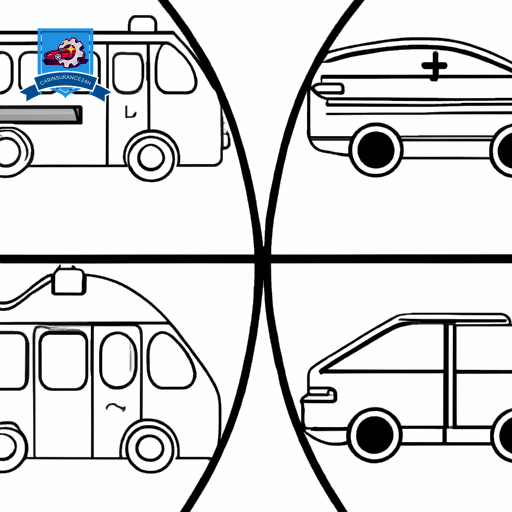
Understanding the differences between Medical Payments (MedPay) and Personal Injury Protection (PIP) insurance is essential for drivers seeking thorough coverage. Both types of insurance offer benefits for medical expenses arising from auto accidents, but they diverge in scope, requirements, and availability, which can impact a policyholder’s decision-making process.
MedPay provides coverage for the policyholder and passengers’ medical expenses after an accident, regardless of who is at fault. Its straightforward nature means there are no deductibles or co-pays, making it a simple, though often limited, form of protection. MedPay is generally optional in states where it is available, offering a base level of coverage for medical and funeral expenses without delving into the broader financial impacts of an accident.
On the other hand, PIP insurance offers a broader spectrum of coverage, including medical expenses, lost wages, and sometimes funeral costs. PIP is mandatory in some states, reflecting its all-encompassing approach to post-accident financial protection. However, PIP deductibles and the specifics of coverage can vary due to state variations, making it important for policyholders to understand their state’s requirements and how they apply. These state-specific differences can affect the cost, availability, and benefits of PIP, necessitating a careful review to make sure adequate coverage.
Both MedPay and PIP insurance have their place in a well-rounded auto insurance policy, but understanding the nuances, including PIP deductibles and state variations, is key to selecting the best coverage for an individual’s needs.
Coverage Limits Explained

Coverage limits are a critical component of Medical Payments (MedPay) and Personal Injury Protection (PIP) insurance, dictating the maximum amount an insurance provider will pay for covered expenses following an auto accident. These limits play a pivotal role in determining the extent of coverage an individual can receive for medical bills, lost wages, and, in some cases, funeral expenses. Policyholders must understand how these limits can affect their financial protection in the event of an accident.
The selection of coverage limits is a strategic decision that requires careful consideration. Higher limits offer more extensive protection but come with higher premiums. Conversely, lower limits may result in more affordable premiums but could leave the policyholder exposed to significant out-of-pocket expenses if the costs of an accident exceed the coverage limit. It’s essential for individuals to balance their need for protection with their budgetary constraints.
Tax implications are another important aspect to consider when selecting coverage limits. In some cases, the benefits received from MedPay or PIP coverage may be tax-free, providing an additional financial advantage to policyholders. However, it’s advisable to consult with a tax professional to understand the specific tax implications of one’s policy.
Policyholders should be aware of the potential for policy cancellation if claims exceed the selected coverage limits. This could leave individuals without necessary coverage and possibly affect their ability to obtain insurance in the future. Selecting appropriate coverage limits is not only about ensuring adequate financial protection but also about maintaining the viability of the insurance policy itself.
Eligibility for MedPay
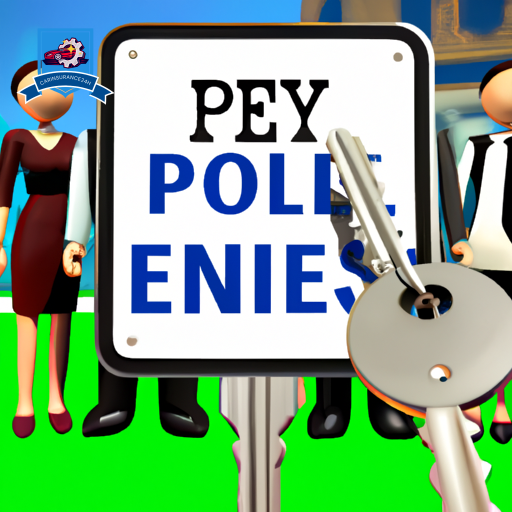
Understanding who qualifies for Medical Payments Car Insurance (MedPay) is essential for policyholders seeking thorough coverage. This section will address the criteria for eligibility, focusing on the specific requirements policyholders must meet and the limits of coverage provided.
It is imperative for individuals to evaluate their need for MedPay in the context of their existing health insurance and driving habits to make informed decisions about adding this coverage to their policy.
Who Needs MedPay?
Eligibility for Medical Payments (MedPay) insurance extends to drivers and passengers seeking financial protection against medical expenses incurred due to a car accident, regardless of who is at fault. This coverage is particularly important for individuals who:
- Lack thorough health insurance, as MedPay can fill coverage gaps.
- Frequently drive with passengers, offering them protection as well.
- Desire simplicity in managing accident-related medical expenses, avoiding complex fault determinations.
Considering MedPay involves understanding the tax implications and legal considerations.
While MedPay can offer essential financial support, it’s essential to assess how it integrates with existing insurance policies and the potential legal landscape of your state. This makes sure that you’re not only compliant but also maximizing the benefits available to you and your passengers under this coverage.
Coverage Limits Explained
When considering Medical Payments (MedPay) insurance, it is pivotal to understand the specific limits of coverage it provides to drivers and passengers involved in an automobile accident. MedPay policies establish clear limits on the amount that can be paid out for medical expenses per accident, which is critical for policyholders to comprehend.
The deductible impact is an essential factor since MedPay coverage often applies regardless of whether a deductible is met, contrasting with other types of medical insurance. Understanding these limits is fundamental, especially when considering policy renewal, to make sure coverage continues to meet the policyholder’s needs.
Adjusting these limits at the time of renewal can provide enhanced protection or cost savings, depending on the individual’s circumstances and requirements.
Policyholder Requirements
To qualify for Medical Payments (MedPay) coverage, policyholders must meet specific criteria set forth by their insurance provider, which can vary based on the company and the state in which the policy is held. Understanding these qualifications is essential for policyholders to make sure they remain eligible for MedPay benefits.
-
Continuous Coverage: Avoiding policy cancellation for non-payment or other reasons is crucial.
-
Accurate Information: Providing truthful and accurate information during the application process and when updating a policy is necessary to prevent premium adjustments or policy cancellation.
-
Policy Renewal: Meeting all requirements for policy renewal on time guarantees continuous coverage.
Adhering to these guidelines helps maintain eligibility for MedPay, making sure policyholders can access medical payments coverage when needed.
Filing a MedPay Claim
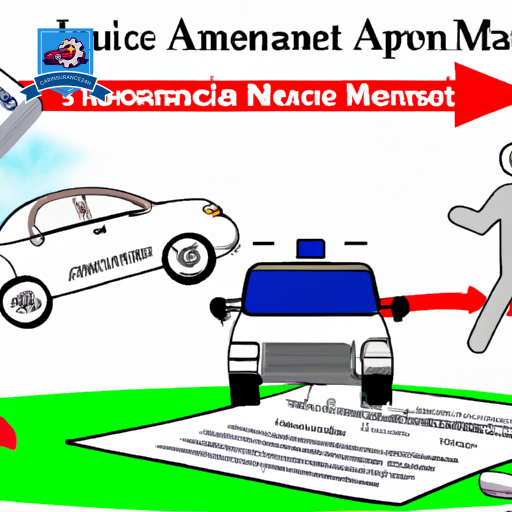
Filing a MedPay claim involves a straightforward process that requires policyholders to submit necessary documentation to their insurance provider promptly. This process is critical for ensuring that medical bills resulting from an auto accident are covered without delay. Understanding common claim denial reasons and following documentation tips can greatly streamline the procedure and increase the likelihood of claim approval.
One of the primary reasons for claim denial is incomplete or inaccurate documentation. Insurers require detailed medical records, bills, and proof of the accident to process a claim. It’s advisable to keep a detailed record of all medical treatments received, including dates, services provided, and the names of the healthcare providers. Additionally, a copy of the police report, if applicable, can be important in substantiating the claim.
Another frequent issue leading to denial is the failure to file the claim within the prescribed timeframe. Policyholders should familiarize themselves with their policy’s specific deadlines for claim submission and adhere to them strictly. Prompt communication with the insurance company following an accident can prevent unnecessary delays or denials.
Documentation tips for a successful MedPay claim include organizing all medical bills and records systematically, ensuring that the information is complete and accurate, and providing a clear narrative of the accident and its resulting injuries. It’s also beneficial to maintain regular contact with the insurance provider, keeping them updated on any new developments related to the medical treatment or recovery process.
Costs and Premiums

Understanding the costs and premiums associated with Medical Payments (MedPay) coverage is essential for policyholders to effectively manage their insurance expenses. MedPay premiums are determined by various factors, which can influence the overall cost of the policy. These premium factors include the policyholder’s driving record, the level of coverage selected, and the insurer’s assessment of the policyholder’s risk profile.
-
Premium Factors:
- Driving Record: A clean driving record typically results in lower premiums, as insurers view these drivers as lower risk.
- Coverage Level: Opting for higher limits of coverage will increase the premium cost, but provides more extensive financial protection.
- Risk Assessment: Insurers consider factors such as the policyholder’s age, location, and type of vehicle when determining premiums.
-
Discount Opportunities:
- Many insurers offer discounts that can help reduce the cost of MedPay coverage. It’s essential for policyholders to inquire about available discounts, which may include:
-
Bundling multiple insurance policies with the same provider.
-
Installing safety features in the vehicle.
-
Maintaining a good driving record over time.
Understanding these elements allows policyholders to make informed decisions about their MedPay coverage and take proactive steps to manage their insurance costs. By considering the premium factors and actively seeking discount opportunities, policyholders can find a balance between adequate medical coverage and affordable premiums. This strategic approach to insurance planning ensures that policyholders are both financially protected and conscious of their insurance expenditures.
Common Misconceptions
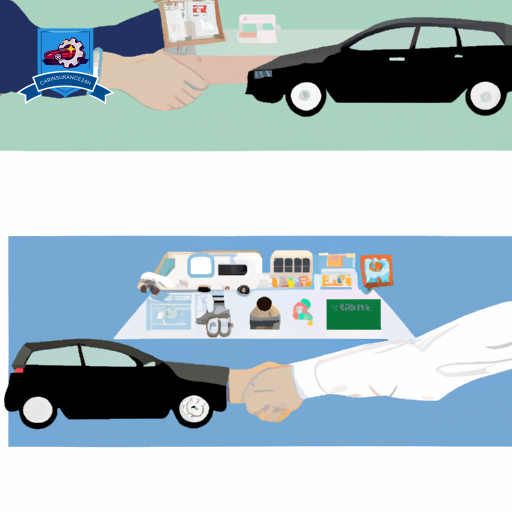
While many policyholders carefully consider costs and premiums, certain myths surrounding Medical Payments (MedPay) insurance can lead to confusion and misinformed decisions. It is vital to dispel these myths to guarantee individuals are adequately informed about their coverage options and do not base their insurance decisions on inaccurate information.
| Myth | Fact | Impact on Policyholder |
|---|---|---|
| MedPay is redundant if you have health insurance. | MedPay covers deductibles and co-pays not covered by health insurance. | Reduces out-of-pocket expenses after an accident. |
| MedPay premiums are too high for the coverage provided. | Premiums are relatively low compared to the benefits, especially for covering immediate medical costs. | Misjudgment can lead to declining valuable coverage for minor cost savings. |
| Only the driver is covered by MedPay. | MedPay extends to passengers and policyholders injured while in other vehicles or as pedestrians. | Misinterpretation limits the perceived value of MedPay. |
| MedPay coverage is unnecessary if you have Personal Injury Protection (PIP). | MedPay can supplement PIP by covering medical expenses that exceed PIP limits. | Ignorance may result in underutilization of available resources for comprehensive coverage. |
| All auto insurance companies offer the same MedPay benefits. | Coverage and limits vary greatly between insurers. | Assumption leads to missed opportunities for optimal coverage tailored to individual needs. |
Dispelling these premium misconceptions and coverage myths is essential for making informed decisions regarding MedPay insurance. Understanding the true benefits and limitations allows policyholders to optimize their coverage and financial protection in the event of a vehicular accident.
Choosing the Right Coverage

Selecting the appropriate MedPay insurance requires careful consideration of various factors to guarantee coverage and financial security in the event of an accident. It’s imperative to evaluate your personal needs, financial situation, and the specifics of how MedPay integrates with your overall insurance portfolio. This decision should not be taken lightly, as the right coverage can have a major impact on alleviating the financial burden associated with medical expenses following a vehicular incident.
When choosing the right MedPay coverage, consider the following:
- Coverage Limits: Assess your financial situation and potential medical costs in the unfortunate event of an accident. Opting for a higher limit may increase your peace of mind but also your premium. Balance is key.
- Deductibles and Co-pays: Understand the out-of-pocket expenses that come with your policy. A lower deductible might mean a higher premium, but it can also provide more immediate financial relief if you need to use the coverage.
- Policy Discounts and Provider Networks: Some insurers offer discounts for bundling MedPay with other policies or for being part of a preferred provider network. These aspects can influence your decision by potentially lowering costs and ensuring access to a broad network of healthcare providers.
It’s also crucial to conduct thorough research on various insurers to compare how their MedPay offerings stack up against each other. Consider factors such as customer service, claim processing times, and the ease of adding or adjusting coverage. Understanding these elements, along with the potential for policy discounts and the breadth of provider networks, will guide you towards making an informed decision that aligns with your healthcare needs and financial capabilities.
Adding MedPay to Your Policy
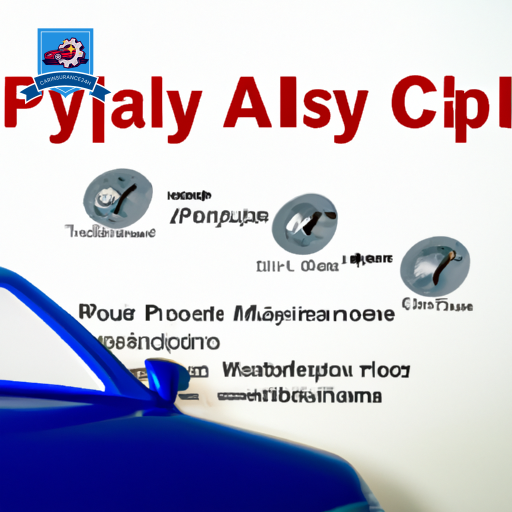
Once you’ve decided that MedPay coverage is a critical component of your auto insurance portfolio, the next step involves integrating it seamlessly into your existing policy. This integration process is both straightforward and essential for ensuring your financial protection in the event of medical expenses arising from auto accidents.
To begin, you should contact your insurance provider and express your interest in adding MedPay. Your insurer will then guide you through the necessary procedures, which typically involve reviewing your current policy details and determining the appropriate MedPay coverage level based on your unique needs and budget.
It’s important during this process to inquire about any potential policy discounts that may apply when adding MedPay. Many insurers offer discounts for bundling multiple types of coverage or for maintaining a consistent policy without any claims. These discounts can notably lower your overall insurance costs, making MedPay an even more attractive option.
Additionally, an annual review of your insurance portfolio, including MedPay, is advisable. This review allows you to adjust coverage levels as your life circumstances change, such as if you acquire a new vehicle or if your healthcare needs evolve. During these reviews, you can also reassess your eligibility for policy discounts, ensuring that you are always receiving the best possible rate.
Frequently Asked Questions
What Specific Treatments Are Excluded From Medpay Coverage?**
In addressing the question of exclusions in coverage, it is important to note that specific treatments may not be covered under certain policies. Significantly, dental coverage and prescription drugs are often areas where exclusions apply.
When considering medical payments coverage, it is essential to carefully review the policy details to understand which treatments are not included. This guarantees that individuals are fully aware of the scope of their coverage and any potential limitations.
This FAQ Would Delve Into the Nuances of What Medical Treatments or Scenarios (E.G., Experimental Procedures, Non-Emergency Cosmetic Surgeries) Are Not Covered Under the Standard Medical Payments Car Insurance, Providing Clarity on the Limitations of the Policy.
This FAQ explores the coverage extent and policy exceptions concerning specific medical treatments not included under standard policies. It clarifies the limitations, particularly highlighting scenarios such as experimental procedures and non-emergency cosmetic surgeries, which are generally excluded.
Understanding these exclusions is important for policyholders to recognize the boundaries of their coverage and avoid unexpected out-of-pocket expenses. This structured and logical explanation guarantees precise comprehension of policy limitations.
How Does Medpay Coordinate With Health Insurance Plans, Especially if There Are Conflicting Coverage Clauses?**
In the domain of insurance, ‘prevention is better than cure’ aptly applies when coordinating between health insurance plans and additional coverage, such as MedPay.
It is important to engage in premium negotiation and be mindful of potential coverage termination clauses that may arise due to conflicting policies.
A structured, precise approach guarantees seamless integration, minimizing the risk of overlapping or void coverage, thereby safeguarding against unforeseen financial burdens due to medical expenses.
This Question Would Explore the Complex Interaction Between Medpay and Personal Health Insurance Policies, Particularly Focusing on How Claims Are Handled When Both Policies Could Potentially Cover the Same Medical Expenses.
The exploration of the intricate dynamics between different insurance policies centers on the claim process when both could cover identical medical expenses.
It importantly analyzes the coordination mechanisms, emphasizing the role of the policy premium in determining priority and influence on claim settlements.
This examination is pivotal in understanding the structured, logical steps involved in resolving potential conflicts, ensuring that the claimant receives the appropriate coverage in a precise and efficient manner.
Can Medpay Coverage Extend to Incidents Occurring Outside of the Insured Vehicle, Such as Pedestrian Accidents?**
In exploring the coverage scope of insurance policies, a critical question arises: Can coverage extend to incidents beyond traditional parameters, such as pedestrian accidents during international travel?
This inquiry delves into the nuanced dynamics of insurance, where coverage limits play a pivotal role. It necessitates a structured, precise examination to discern whether such policies transcend traditional confines, offering protection in scenarios that differ from the expected, such as accidents occurring outside the insured vehicle.
